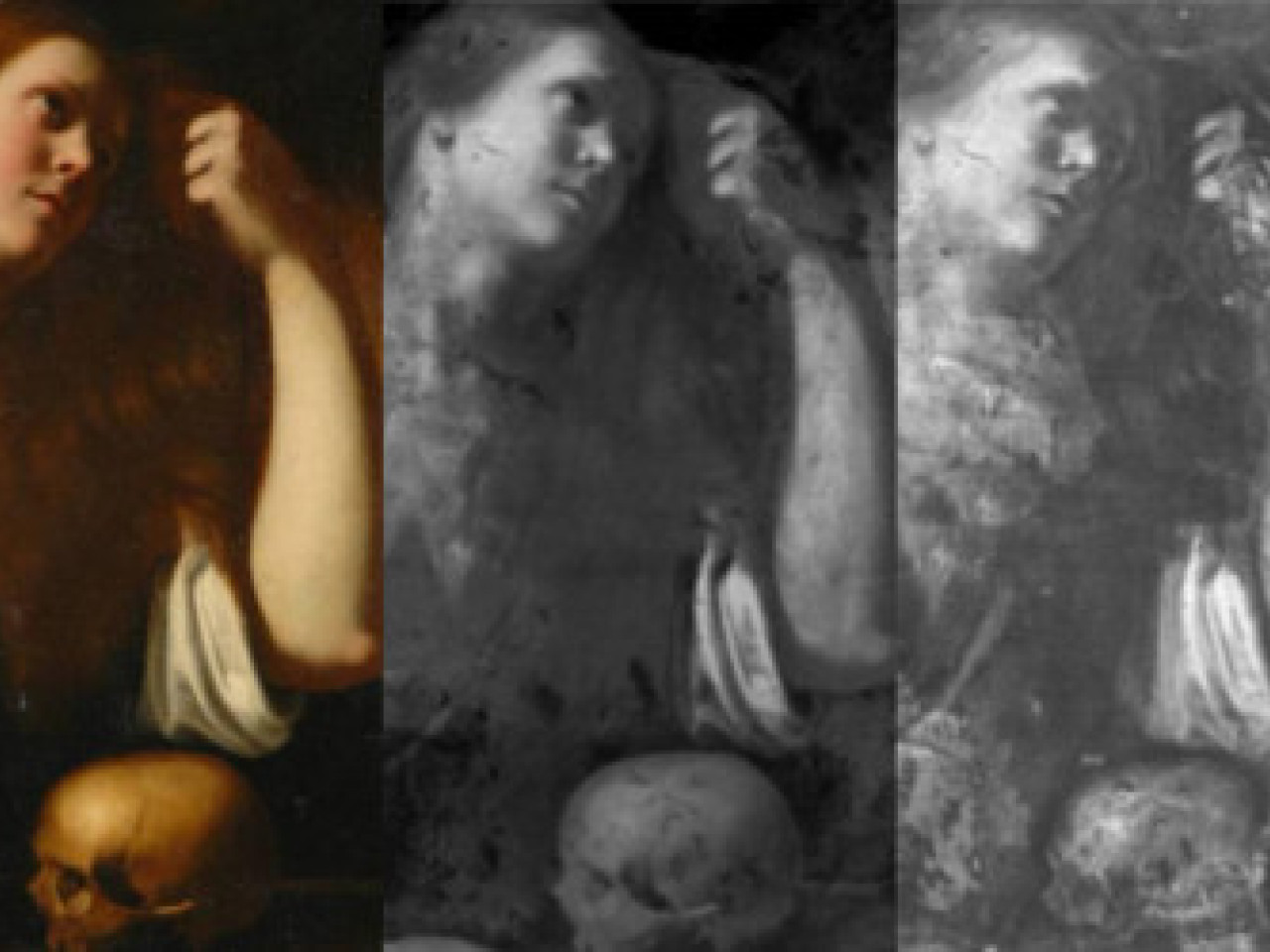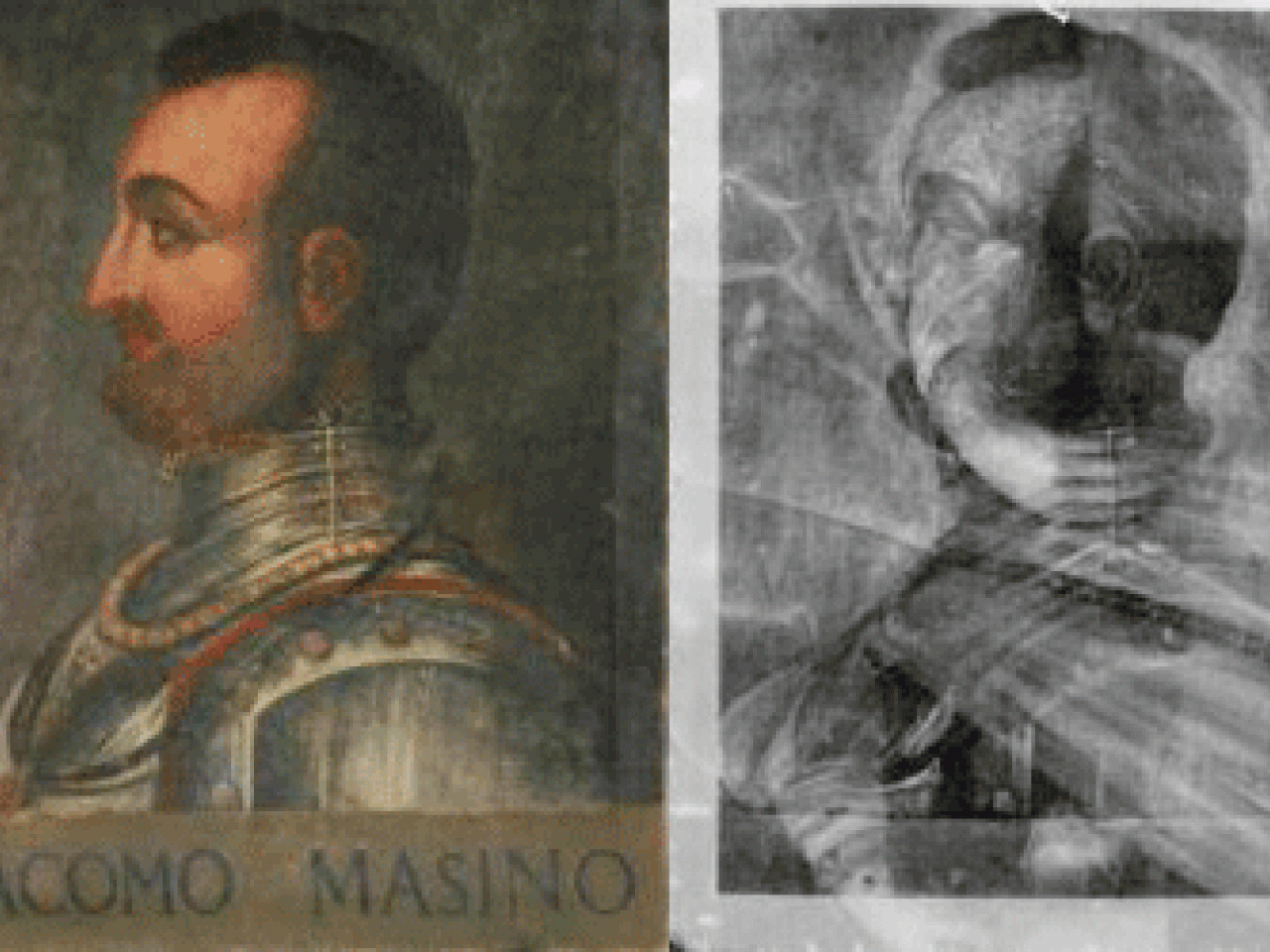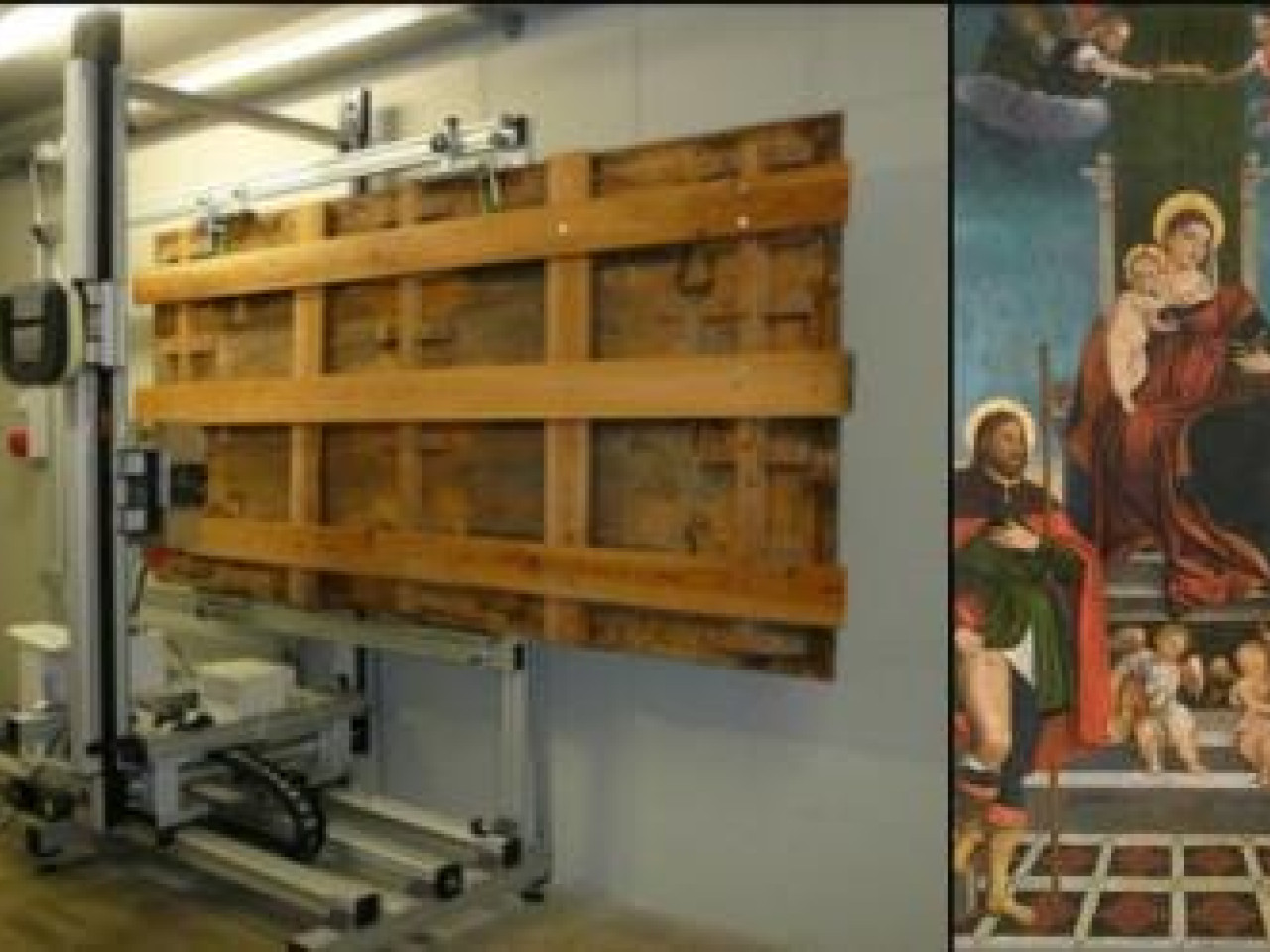Scientific diagnostics is an important tool to improve the interpretation and knowledge of a work of art, allowing its evolution over time to be documented and monitored and any restoration work to be scheduled. It is obviously important in this sphere to make use of tests that do not alter or damage the item under study. Therefore, over the years non invasive and non destructive techniques have been developed, that may potentially be implemented on site: that is the case with diagnostic imaging. The Physics Research Group in TekneHub area 3 applies diagnostic imaging - which make use of various bands of the electromagnetic spectrum, from infrared to X-rays - also by designing and developing ad hoc instrumentation. Two scanning system prototypes have been developed: for digital radiography and wide spectral band IR Reflectography
 Painting on canvas of the seventeenth century and its radiographic and reflectographic images
Painting on canvas of the seventeenth century and its radiographic and reflectographic images
The digital X-ray scanner allows large sized painting radiograms to be acquired directly on digital detector, overcoming the constraints of traditional plate radiography. The high extent of digitalisation makes it possible to handle images to eliminate disturbing factors in X-ray reading. The IR Reflectography scanner uses an InGaAs detector with wide spectral sensitivity from 0.8 to 2.5 µm. By reaching higher wavelengths it has improved detection of the preparatory drawing thus identifying aspects of the paint layer that could not be observed with other detectors.
The protocol is specifically applied to paintings, in order to deepen the knowledge of materials and artistic technique in a completely non-invasive manner, whether for the purpose of restoration and conservation or study; it stems from the idea of satisfying a variety of diagnostic queries based on the integration of various techniques. The protocol may be applied to ancient, modern and contemporary paintings, on board or canvas. Almost all diagnostic imaging techniques may be effective on sculptural surfaces as well.
 Sixteenth century painting on canvas and its radiographic image revealing a hidden painting
Sixteenth century painting on canvas and its radiographic image revealing a hidden painting
X-Ray and IR reflectography of the painting Madonna and Child between St. Rocco e St. Sebastian by Giovanni da Mel
The object of study is a large-sized panel painting of the sixteenth century, 1.36 x 2.75m, with provisional framing and reinforcement structure applied on the back. Over the centuries, it had undergone extensive repainting making cleaning and restoration difficult. The diagnostic queried put by the Superintendence was to identify the work's original parts and to distinguish them for later repainting. The solution was sought in digital X-Ray. Thanks to the digitisation depth of 12 bits/pixel, it was possible to recover the information concealed by the significant presence of the wooden structure on the rear, with no need to physically remove it. The X-Ray made it possible to identify, with extreme precision, the areas where the original painting was showing high inconsistency and fragmentation of the paint layer compared to later repainting. Wide spectral band IR reflectography was also applied on the faces of the main parsonages to locate any preparatory drawing. The results obtained from the combination of the two imaging techniques - with the additional support of sampling tests - provided a guide for cleaning operations, conducive to following a selectivity criterion focused on retrieving portions of the original painting, where possible, such as the blue sky in the background.
INFN Ferrara Soprintendenza per i beni storici artistici (Venezia, Belluno, Padova e Treviso) Laboratorio di restauro dipinti Mariangela Mattia (BL)
In addition to the above mentioned application example, 11 more diagnostics tasks were carried out, assigned by the Superintendence, museums, foundations, restoration laboratories and private collectors. Since 2010, 15 scientific publications, 4 doctoral theses - of which 2 by the laboratory staff - and 3 Bachelor degree theses have been turned out.
 The painting during radiography and after restoration.
The painting during radiography and after restoration.

